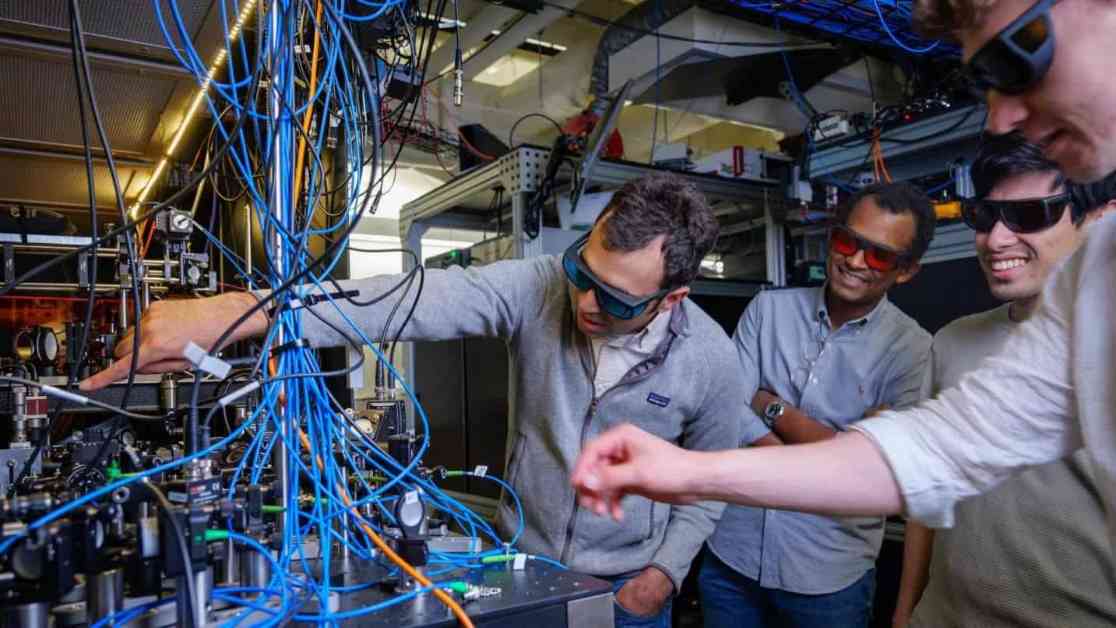Frequency measurements using multi-qubit entangled states have recently been conducted by two separate research groups in the United States. These entangled states have errors that are correlated, leading to more precise measurements than what is achievable with the standard quantum limit. One of the teams, based in Colorado, focused on enhancing the precision of an atomic clock, while the other group in California explored the application of entangled states in quantum sensing.
Atomic clocks are known for their exceptional accuracy in timekeeping. These clocks function by synchronizing an ultra-precise laser to a narrow transition in an atom. The higher the frequency of the transition, the more accurate the clock becomes in timekeeping. Currently, the most precise atomic clock is operated by Jun Ye’s group at JILA in Boulder, Colorado. This clock, after running for the age of the universe, would only deviate by 0.01 seconds.
Traditionally, improving precision in atomic clocks involved utilizing higher-energy, narrower transitions found in highly charged ions and nuclei. However, this approach presents challenges in locating the transitions and generating stable high-frequency lasers for their excitation.
An innovative method to enhance precision is by employing multi-qubit entangled states. In an optical atomic clock, the oscillations of an atomic superposition are compared with the laser frequency. By placing multiple atoms into a Greenberger–Horne–Zeilinger (GHZ) entangled state and measuring them simultaneously, information can be obtained at a higher frequency without increasing the fundamental frequency of the transition.
The research conducted in Colorado involved creating GHZ states of Rydberg atoms using a unique, multi-qubit entangling technique. While the team achieved higher precision with the GHZ states compared to uncorrelated atoms, they faced challenges due to the short lifetimes of these states. To address this limitation, a cascade of GHZ qubits of increasing sizes was constructed, demonstrating superior fidelity compared to a single large GHZ qubit.
In California, a separate group used GHZ states to perform precision spectroscopy on the frequency of an atomic clock. Their technique involved Rydberg atoms in an optical tweezer array. While the GHZ states prepared using their method were not as large as those in the Colorado experiment, they focused on mapping output data onto “ancilla” qubits and showcasing a universal set of quantum logic operations.
Both research teams received praise from experts in the field for their innovative approaches. The Coloradan group was commended for their success in enhancing clock precision, while the Californians were acknowledged for exploring new avenues with GHZ states. The potential integration of quantum computers with sensors for improved sensing capabilities was highlighted as a promising direction for future research.
The findings of these studies, published in Nature (California paper, Colorado paper), contribute to advancing the field of atomic clocks and quantum sensing through the utilization of multi-qubit entangled states for enhanced performance.













